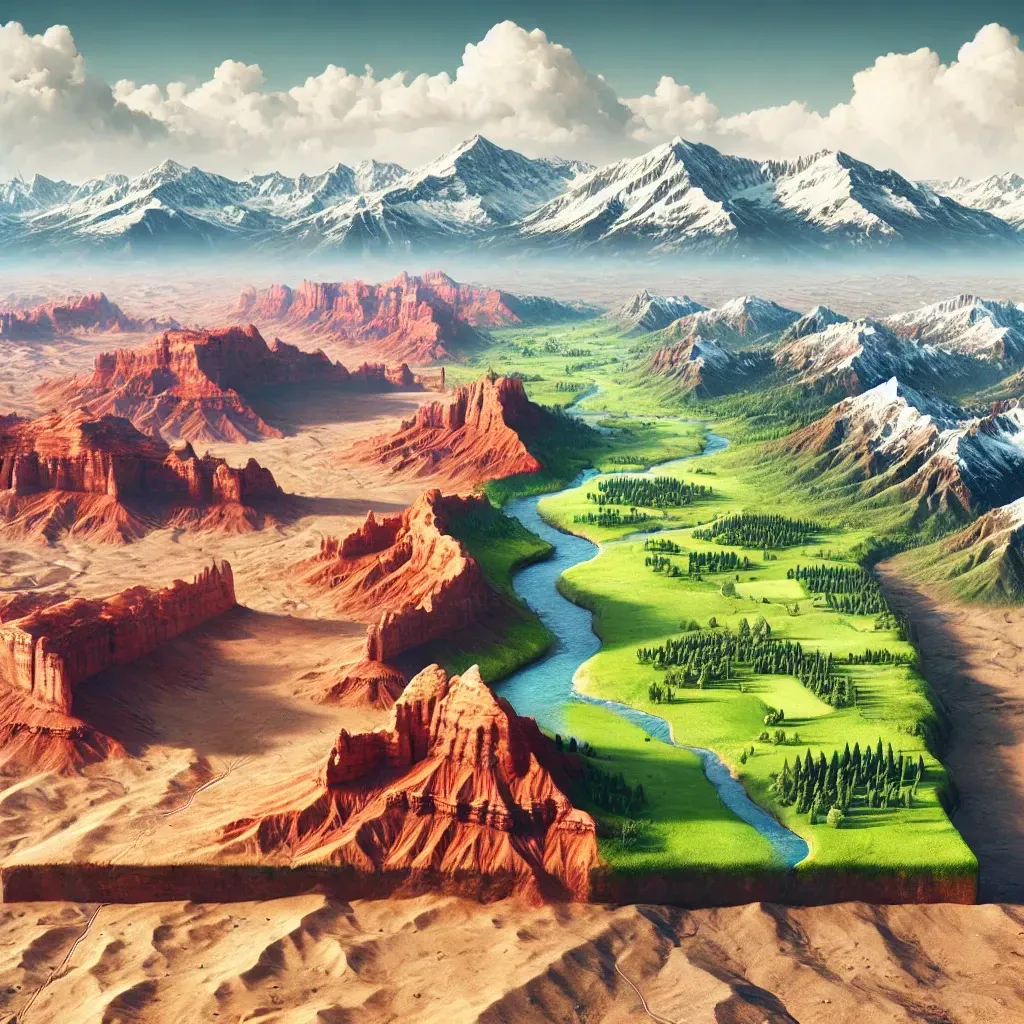
Pros and Cons of Buying Land in Utah
Utah's stunning landscapes, ranging from arid deserts to majestic mountains, have made the state a prime destination for land investors and homesteaders alike. As of 2023, the average price of farmland in Utah is about $2,420 per acre, reflecting a 3.4% increase from the previous year, according to USDA data. The state's population is also on the rise, growing at an annual rate of 1.2%. With this trend, many are considering purchasing land in Utah, but it’s crucial for prospective buyers to thoroughly evaluate the benefits and potential drawbacks.
Pros of Buying Land in Utah
**Affordable Pricing**
Utah offers competitive land prices compared to many coastal states. The cost per acre varies based on location and features. In Northern Utah, land typically ranges from $5,000 to $15,000 per acre. While Central Utah, specifically areas around Park City, can see prices soar past $1 million for prime properties, Southern Utah remains affordable, with desert land available for under $5,000 per acre.
**Recreational Opportunities**
Utah is a paradise for outdoor enthusiasts boasting five National Parks—Zion, Bryce Canyon, Capitol Reef, Arches, and Canyonlands—along with numerous state parks. Purchasing recreational land can enable buyers to build cabins for weekend getaways or full-time living. Prospective buyers should seek plots adjacent to forests or trails to maximize their recreational options.
**Scenic Beauty**
From the iconic red rocks of Southern Utah to the lush Wasatch Mountains, Utah’s landscapes are breathtaking. This natural beauty enhances the value of recreational land, making it ideal for those looking to build camping or glamping retreats. Scenic plots can command higher prices, especially those with views of unique geological features, though buyers should be mindful of restrictions in protected areas.
**Tax Benefits**
Utah has moderate property tax rates, which range from 0.6% to 1.2%, making it an attractive state for land investors. Agricultural lands can benefit from preferential rates under the Farmland Assessment Act, while conservation easements might provide tax reductions as well. Counties like Washington are among those with lower rates, presenting excellent investment opportunities.
Cons of Buying Land in Utah
**Limited Infrastructure**
Outside the Wasatch Front, Utah’s infrastructure can be sparse. Buyers must research the accessibility of roads and availability of utilities before purchasing land. Enhancing infrastructure can incur significant costs and may complicate development plans, making due diligence essential.
**Weather Extremes**
Utah's weather can pose challenges. Summers can be scorching, while winters bring significant snowfall. This diversity in climate can lead to elevated road maintenance costs and infrastructure issues. Understanding local weather patterns is crucial for potential buyers, particularly concerning land use and value.
**Water Rights**
Navigating Utah's complex water laws is critical for prospective landowners. Water rights must be scrutinized to avoid issues with irrigation or residential needs. Surface water rights often take precedence, so it is advantageous to have an existing water source on the property.
**Remote Locations**
While some may appreciate the remoteness of Utah land, it often means being far from essential services like healthcare and grocery stores. Potential buyers should be prepared for long commutes and stock up on necessities, especially since travel can be hindered by winter weather.
**Land Use Regulations**
Zoning regulations, mineral rights, and easements must be researched thoroughly before making a purchase. Buyers may find their land use plans limited by existing regulations, making it essential to understand local laws and possible restrictions proactively.
**Reselling Challenges**
Selling land in Utah can be time-consuming, requiring patience as the market may take 1-2 years to find the right buyer, particularly for remote properties. Specialized land buying companies can aid in reselling, but may necessitate a price discount.
Final Thoughts
Investing in land in Utah can be rewarding, provided buyers conduct diligent research on essential factors such as terrain, access, and regulations. As Utah attracts more residents, carefully navigating the pros and cons of land ownership can help uncover valuable investment opportunities. Partnering with local experts may streamline the buying process and enhance reselling potential.
Frequently Asked Questions
**What are average land prices per acre in Utah?**
Prices vary greatly; northern Utah averages $5,000-$15,000 per acre, while prime properties can exceed $1 million. Affordable desert land options are available in lower demand areas for under $5,000.
**Does Utah tax land or just the improvements?**
Property taxes are applied to both land and its improvements, with rates typically between 0.6% and 1.2% depending on the assessment.
**How much deposit is typical for buying land?**
A typical earnest money deposit ranges from 10% to 30%, which secures the property during the closing process.
**Should mineral rights be investigated when purchasing land?**
Yes, always vet mineral rights to ensure that surface rights allow the intended use, as previous leases could disrupt plans.
**What are steps to research water rights when buying land?**
Check with the Utah Division of Water Rights for specifics on water usage and precedents for any water sources connected to the land. Researching this aspect is crucial for any agricultural or irrigation needs.



